Going Beyond Three-Axis Milling
In its quest for greater moldmaking efficiency, this shop added fourth- and fifth-axis positioning mills and is about to buy its first continuous five-axis mill.
If Chicago Mold Engineering Co., Inc., St. Charles, Illinois, had a motto, it would probably be "Do as much as you can in one operation." That operating philosophy has led the firm to invest in new milling machines with fourth- and fifth-axis positioning capability (also known as three-plus-two machines) that allow it to more completely machine mold cores and cavities than was possible on the shop's older, conventional, three-axis CNC mills. And having experienced firsthand the benefits of three-plus-two machining, the firm is ready to take the next step to continuous five-axis machining.
Chicago Mold Engineering designs and builds injection, compression and structural foam molds for the automotive, communications and other industries. Until recently, the firm roughed out its mold components on milling machines and then moved them to the EDM department to produce the fine details and final finish. EDMing is a relatively slow process, however, and to shorten processing time, the shop wanted to be able to produce its mold cores and cavities as completely as possible by the milling process to minimize the amount of EDMing required.
Semi-finish- and finish-machining of a mold cavity on a milling machine imposes certain requirements, however. First, very-small-diameter end mills must be used to achieve the finer surfaces desired. End mills used to produce finishing cuts can be as small as 1/8 inch or 1 millimeter in diameter. Such slender tools are subject to deflection, which can result in machining inaccuracies and tool breakage.
Next, the small end mill must be able to reach everywhere within the mold cavity. That created problems for Chicago Mold Engineering because its CNC mills were all three-axis machines. The spindle and toolholder were limited to a straight up and down movement (or horizontal movement in the case of horizontal-spindle machines), and the girth of the toolholder prevented the tool from being able to reach such details as the radii where the sidewalls meet the bottom of the cavity. "We'd usually have to stop milling at some point and transfer the cavity to an EDM machine to complete the job." explains Ralph Oswald, Chicago Mold's owner and CEO.
If Chicago Mold Engineering was going to reduce the amount of EDMing required to finish its mold components, it needed a milling machine able to maneuver the cutting tool to access those otherwise impossible-to-reach areas. That meant the purchase of a machine with fourth- and fifth-axis positioning capabilities, that is, able to move in three linear axes and two rotary axes. Ideally, the additional axis moves needed to be incorporated in the machine tool's machining head instead of in the worktable or an indexing fixture because of the difficulty involved in rotating the large, heavy workpieces.
After researching the machines available on the market, Mr. Oswald purchased the FPT SIRIO-T10 heavy duty milling and boring machine from FPT North America Inc. (Canton, Michigan). The SIRIO-T10 is built like a horizontal boring mill. Its ram travels up and down (Y axis) on a column and moves toward and away from (Z axis) a large (5 by 10 foot) worktable. The column itself moves toward and away from the worktable (V axis). The table is a separate unit that moves back and forth (X axis) in front of the column. What makes the machine different from most horizontal boring mills is an automatic universal head, mounted on the ram, that can be programmed to index in 1-degree increments in both the B and C axes to present the cutting tool to the work vertically, horizontally or at virtually any angle.
More Complete Machining
Chicago Mold Engineering uses the machine primarily for semi-finish- and finish-machining of mold cores and cavities. "The SIRIO-T10 allows us to do more on one machine in one setup," Mr. Oswald affirms. "In most cases we can machine mold cavities more completely, which reduces the amount of EDMing that must be performed on the parts. That translates to faster processing times, faster deliveries and reduced costs."
The pluses do not stop there. Ability to index the head to present the tool at an angle to the work avoids many tool/toolholder clearance problems that arise on three-axis machines. And because access to the machining area is greatly improved, shorter end mills can be used. That makes for more rigid cutting with less tool deflection.
Compatability of the three-plus-two machine with the shop's existing CAM software and programming procedures is another important advantage. At Chicago Mold Engineering, the operators do tool path programming at the machines using WorkNC or PowerMILL software. The three-plus-two machine can also be programmed at the machine using the same software.
Mr. Oswald calls the SIRIO-T10 the most versatile machine in the shop. It can machine vertically, horizontally and at any angle. Its worktable can accommodate very large workpieces, or two or more smaller workpieces can be set up on the worktable at the same time. Adding to the machine's versatility, it employs modular heads that are designed to be changed quickly. At Chicago Mold Engineering, the operator can manually remove the universal head with the aid of an overhead crane and replace it with a high speed milling head in about 20 minutes. Or the operator can remove the universal head, insert a cutting tool in the spindle and operate the machine as a conventional horizontal boring mill.
The Second Machine
Chicago Mold Engineering's experiences with its first three-plus-two machine were, on the whole, positive. However, the shop was concerned about under-utilization of the machine because it was frequently used to machine relatively small mold components. Accordingly, when the shop was ready for its next three-plus-two machine, it purchased a smaller, high-speed Fidia K165 machining center from Fidia Co. (Troy, Michigan).
The K165 is a vertical-spindle, three-axis machining center (X-, Y- and Z-axis travels of 1,000, 600 and 500 mm respectively) that is available with different machining heads. Chicago Mold Engineering chose Fidia's "indexing bi-rotary" head, which provides for fourth- and fifth-axis positioning. B- and C-axis travels of ±25 degrees and +180 degrees/-177 degrees respectively permit positioning of the cutting tool at any desired angle for machining of mold components.
Designed for high speed milling, the K165 has a 30,000-rpm spindle powered by a 17 kW motor. The machine has a 20-tool toolchanger and a focused laser tool-presetting system that checks tool length, diameter and shape, allowing it to run unattended for long periods.
Like the first machine, the K165 is used for semi-finish- and finish machining of mold cores and cavities as an alternative to EDMing. It is shown making a finishing cut on molds for right- and left-hand reflectors for automobile headlight assemblies. The mirror-image parts are mounted side by side on the machine's worktable.
The reflectors are a good example of how high speed milling machines such as the K165 are taking over work that EDM machines once did exclusively. "The reflector is an optical surface that requires a fine finish," observes Mr. Oswald. "To get that finish we have to machine some surfaces with end mills that are 1 mm in diameter or smaller. With cutters that small, the machine must be capable of traveling at high rates of speed, otherwise the machining will take too long. Any job that goes on this machine is going to be running at feed rates of 100 ipm or better.
"Similarly, we would not be able to machine mold components such as the reflectors without the fourth- and fifth-axis positioning capabilities of the machine tool," he continues. "You simply cannot reach all of the surfaces you need to machine using a slender cutting tool mounted in a long toolholder on a three-axis machine. It's much easier to tip the head (on a machine with B- and C-axis capability) and cut at an angle. That way you can use a shorter tool-toolholder arrangement for greater rigidity."
Mr. Oswald reports that performing semi-finish- and finish-machining of mold components on the shop's two three-plus-two machines has reduced its EDM workload by about 20 percent. But he hastens to add that he is not trying to eliminate his EDM department. In fact, over the last few years, Chicago Mold Engineering has invested over $2 million in EDM machines and EDM electrode fabricating equipment.
Five-Axis Electrode Mill
The buying of equipment for the EDM department is not over. The shop is currently negotiating the purchase of its first high speed, continuous five-axis milling machine—which will be used primarily to machine EDM electrodes. Even though Mr. Oswald has added milling machines with fourth- and fifth-axis positioning capability as an alternative to EDMing, he realizes that EDM will remain essential to mold making for the foreseeable future and that he must keep his EDM department up to date to remain competitive. Fast and efficient machining of graphite electrodes is an important part of that equation; therefore, the new continuous five-axis mill will supplement the shop's existing robot-loaded graphite mill in the production of electrodes.
Why purchase a continuous five-axis mill to machine electrodes? Why not purchase another three-plus-two machine? Mr. Oswald feels that while a three-plus-two machine is more practical for machining cores and cavities—he has yet to encounter a situation that his three-plus-two machines could not handle—a high speed, continuous five-axis machine is better suited to machining electrodes. "With the three-plus-two machine, interruptions must be included in the machining program; the spindle must stop, and its angle must be changed before machining can resume," he explains. "With the continuous five-axis machine, the attitude of the spindle continuously changes without any interruption of the machining. The cutting tool remains normal to the surface being machined, making for more efficient, more predictable, more consistent machining of the electrodes."
Adding to its versatility, the continuous five-axis machine will be used to machine small steel mold components, not just electrodes. That provides an alternative processing path in the event of a backup in the EDM department. Mr. Oswald expects that, given the high spindle speed of the new machine and the use of high-performance cutting tools, the shop will be able to machine smaller steel parts as fast as it can mill graphite electrodes.
To step up to continuous five-axis machining capability, Chicago Mold Engineering must also invest in a new CAM program capable of generating five-axis tool paths. Mr. Oswald regards the addition of a second CAM software as part of the cost of staying competitive. "You have to improve continually, whether it be in the area of software, computers, machine tools . . . you can't neglect any area," he warns. With the addition of the three-plus-two machines and the continuous five-axis machine for machining of mold components as well as electrodes, Mr. Oswald is confident that he has a state-of-the-art, flexible, very competitive, moldmaking operation.
Related Content
YCM Alliance Hits IMTS
YCM Technology has joined with other like-minded machine tool manufacturers to take a solutions-based approach to manufacturing.
Read MoreHow to Accelerate Robotic Deburring & Automated Material Removal
Pairing automation with air-driven motors that push cutting tool speeds up to 65,000 RPM with no duty cycle can dramatically improve throughput and improve finishing.
Read MoreRead Next
Five-Axis Machining With A Contouring Head
This accessory brought low-cost five-axis machining to two shops. One had never used five-axis machining before. The other was an experienced five-axis contractor.
Read MoreFour Types Of Five-Axis Machining Centers
Different machines offer different approaches to rotary travel, and each design has its own strengths. Here's how they compare.
Read More3 Mistakes That Cause CNC Programs to Fail
Despite enhancements to manufacturing technology, there are still issues today that can cause programs to fail. These failures can cause lost time, scrapped parts, damaged machines and even injured operators.
Read More
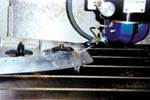
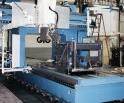

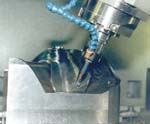
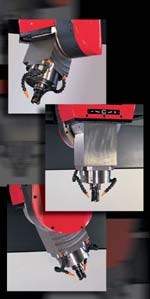
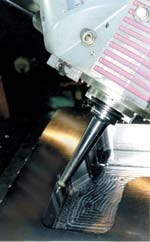
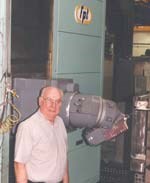
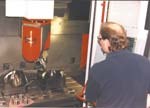




.jpg;maxWidth=300;quality=90)







.png;maxWidth=300;quality=90)








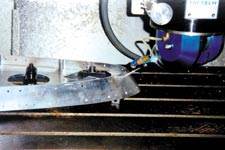
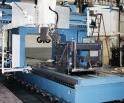

.jpg;maxWidth=970;quality=90)